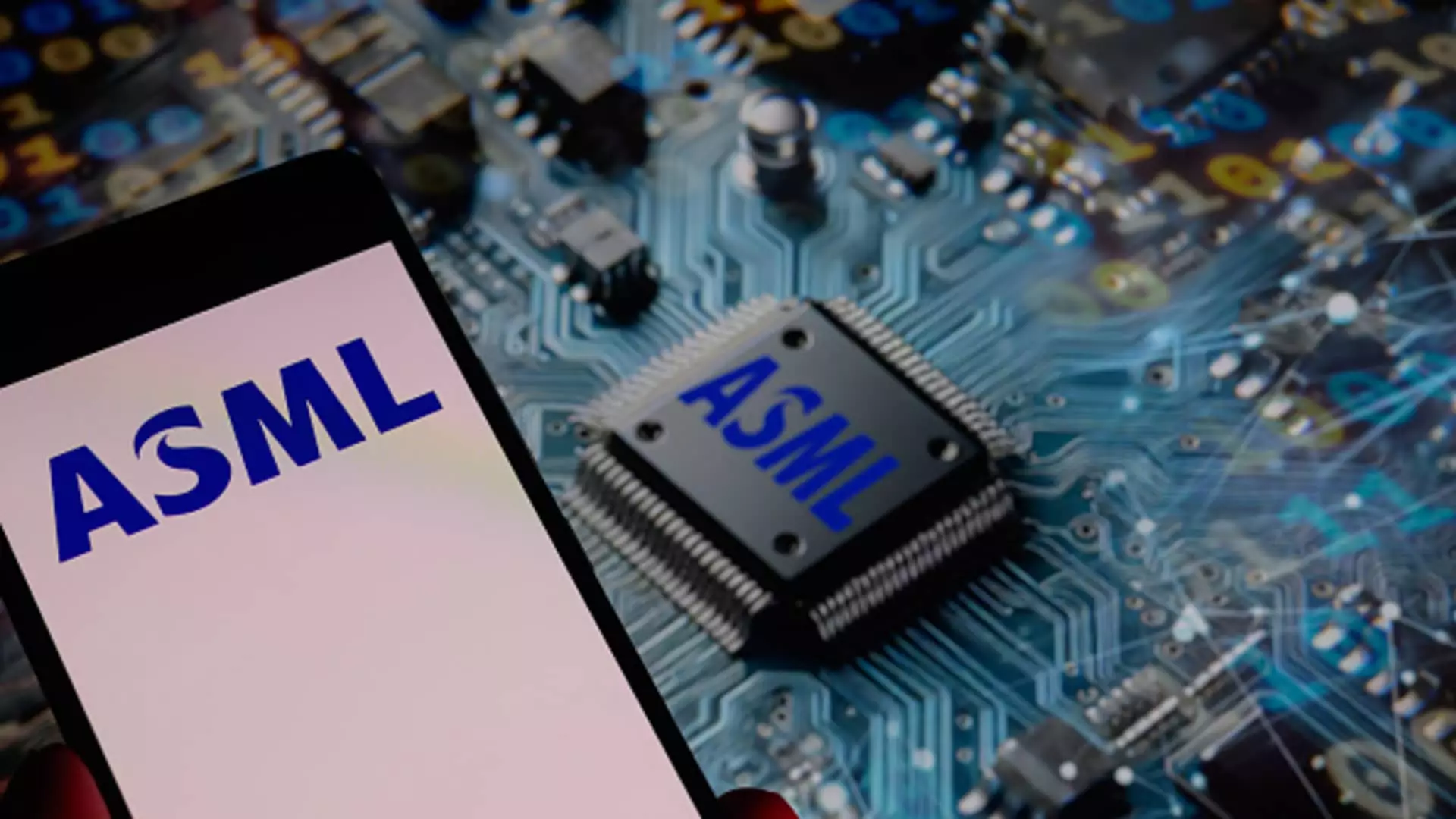In recent months, ASML has positioned itself as a vital player in the semiconductor manufacturing landscape, especially with its EUV lithography machines that are seemingly indispensable for the next generation of chips. However, beneath the surface of impressive quarterly earnings lies a troubling disconnect. The company’s recent guidance for 2026 hints at stagnation — even potential decline — casting doubt on the overoptimistic narratives that have long surrounded the industry’s future prospects. This disconnect between earnings beats and dismal forecasts reveals the fragile foundation upon which much of the semiconductor hype is built. It suggests that, despite the technological marvels and high-profile clients like Apple and Nvidia, ASML is not immune to the global economic shifts and geopolitical tensions that threaten to derail growth.
The Illusion of Resilience Amid Growing Uncertainty
ASML’s ability to beat expectations in the second quarter was celebrated as a sign of resilience, fueled largely by demand for AI-related chips and strategic upgrades of existing machinery. But a deeper look exposes vulnerabilities: the guidance that falls short of market expectations for the current quarter, alongside a stark warning about the uncertain horizon for 2026, signals that the industry’s sandbox is more fragile than it appears. The company’s cautious stance underscores that macroeconomic turbulence, U.S. tariffs, and geopolitical tensions are acting as dam holding back the floodgates of growth. For a company so reliant on cutting-edge technology and global supply chains that are increasingly politicized, the threat of policy shifts looms large. ASML’s admitted uncertainty about future growth reflects broader doubts about the viability of an unchallenged, ongoing expansion.
The Myth of Endless Demand for Advanced Chips
ASML’s claim that AI customer demand remains strong is a comforting narrative, but it is ultimately a veneer covering broader market vulnerabilities. AI advancements do require high-specification chips; yet, this demand is not immune to economic downturns or policy restrictions. The company’s focus on High NA EUV tools, essential for advanced chip-making, might appear as a growth enabler. Still, the decision to ship only one such machine in the quarter reveals how cautious even the most sophisticated producer has become. These colossal, $400 million behemoths symbolize a technological leap, yet their limited deployment signals that current demand may not match the inflated expectations of the industry’s growth trajectory. In a world increasingly wary of overhyped tech promises, reliance on a handful of high-cost machinery as growth drivers seems both risky and unsustainable.
Economic Headwinds and Political Tensions: The Double-Edged Sword
The broader economic landscape is marred with uncertainty. Trade tensions, especially between the U.S. and China, continue to inject volatility into the semiconductor supply chain, threatening the very foundations of ASML’s business model. The U.S. tariffs, which were initially meant to curb China’s technological rise, have inadvertently hamstrung global companies like ASML, intensifying fears of an industry in retreat. These restrictions not only threaten sales but also hamper the innovation cycles necessary for sustained growth. The political climate’s persistent instability underscores a crucial point: reliance on the current geopolitical environment is neither stable nor strategically sound for a future-proof industry.
Is the Promise of Technological Supremacy Just a Mirage?
While ASML’s leadership continues to highlight its technological superiority, it’s worth questioning whether this dominance is as secure as it appears. The company’s heavy investment in next-generation tools like the High NA EUV machines shows foresight, but also exposes how little room exists for error in a high-stakes industry. If demand diminishes or if geopolitical conflicts intensify, the massive costs of these machines could weigh heavily on future profitability. The narrative that AI-driven demand will carry the industry forward into unassailable growth feels overly optimistic. If anything, it risks becoming a rallying cry for stakeholders to ignore the deep-seated vulnerabilities threatening the industry’s long-term stability. The reality is that ASML’s bright future is contingent on a confluence of factors—most notably, continued geopolitical peace and global economic stability—which, given current trends, seems increasingly unlikely.

